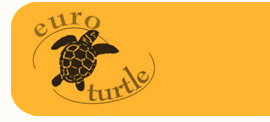"Small
Garbage", the small pieces of personal waste, casually
discarded on beaches or directly into the sea have devastating
effects on the marine environment. Each year it is estimated
that 6.4 million tons of 'small' and 'large' garbage are
dumped into the world's oceans and seas. Besides looking
unsightly, garbage represents a considerable hazard to
both people and marine wildlife. Entanglement and ingestion
of "Small Garbage", accounts for the deaths
of over 100,000 sea mammals and sea turtles in the world
each year.
The most common and destructive objects are made from
the extremely durable, lightweight, versatile and inexpensive
plastic. With varying sizes, colours and shapes, they
are often mistaken for food by sea creatures and sea birds:
Floating plastic pellets (a by-product of plastic manufacturing)
resemble fish eggs, and plastic bags in the water look
like jellyfish, a favourite food of sea turtles. It is
estimated that worldwide 500 billion to one trillion plastic
bags are produced each year! Billions end up in the sea
and on the shores. Turtles who mistakenly eat them may
suffocate; their digestive tract blocked or may feel full,
though in reality they may be starving to death! Air bubbles
in plastics consumed can prevent turtles from diving for
food.
One
turtle in Greece had nearly 10m² of plastic in its
stomach
Plastics contain harmful toxic compounds, such as PCBs
, which once ingested, can affect reproduction and the
animal’s natural ability to resist disease. Toxic
substances can remain in their body, so when predators
eat sea creatures these substances are passed up the food
chain, becoming more concentrated each time (a process
called bio-accumulation). Predators, like marine mammals
and turtles, at the top of the food chain are affected
the most. Declining seal populations and increasing occurrence
of miscarriages have been linked to PCB poisoning.
A
discarded cigarette packet poses multiple hazards: Firstly
the plastic pull strip and wrapper, look like small jellyfish,
then there is the foil, which resembles a fish and the
empty carton itself further pollutes. Unsightly cigarette
butts absorb toxins like a sponge and appear in their
hundreds of thousands on beaches across the Mediterranean,
with unknown consequences on marine life.





